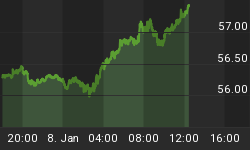When it comes to government economic data, it is easy to get terribly confused. In recent years, it also has become easy to be more and more suspicious of the numbers themselves.
In his guest series, of which this is the third installment, friend and client, Walter J. "John" Williams, helps clear up much of the confusion. We doubt, though, that readers will find this to be the case with regard to the suspicion!
We published the first installment in this series, "Employment and Unemployment Reporting," on 8/24. The second installment, "Federal Deficit Reality," appeared on 9/7. Both drew immense interest. We believe readers will find the current offering, "The Consumer Price Index," equally interesting and provocative. Here's a taste of what the article contains:
"Changes made in CPI methodology during the Clinton administration have understated inflation significantly, and, through a cumulative effect, have reduced current social security payments by 30% from where they would have been otherwise. That means Social Security checks would be 43% higher. In like manner, anyone involved in commerce, who relies on receiving payments adjusted for the CPI, has been similarly damaged. On the other side, if your are making payments based on the CPI (i.e., the federal government), you are making out like a bandit."
John has a long, distinguished record of following and critiquing the changes occurring over the years in the government's reporting of the economic numbers that can and do influence our lives in a major way. In addition to today's and the earlier articles, we will publish one more installment, dealing with gross domestic product. To state that what people observe in today's GDP data seems to have become a little "mystifying" is to engage in significant understatement!
John has again agreed to field any questions or comments this piece generates. You will find this invitation at the conclusion of the article.
The first installment included an introduction section intended to serve that function for the entire series; it was labeled "Series Introduction." It contained a great deal of key definitional material and was highly enlightening in its own right.
For convenience and reference purposes, this section is repeated in the current material, found at the conclusion of the installment. If you have not yet had a chance to read the "Series Introduction," you might want to have a look it before reading the current or prior installments.
John Williams joins a growing list of guest contributors who have provided some terrific material in the short time the GRA website has been in existence. When you have a moment, go to the website's "Guest Contributions" section on the home page (www.gillespieresearch.com/, lower right-hand column) and peruse some of the other work available there. Incidentally, if you did not read the earlier installments of John's series, you will find them posted in the "Guest Contributions" section.
(NOTE: The opinions expressed in the following material do not necessarily reflect the views of Gillespie Research Associates.)
Now, access, read and enjoy: "Government Economic Reports: Things You've Probably Suspected but Were Afraid to Ask! -- The Consumer Price Index".
















